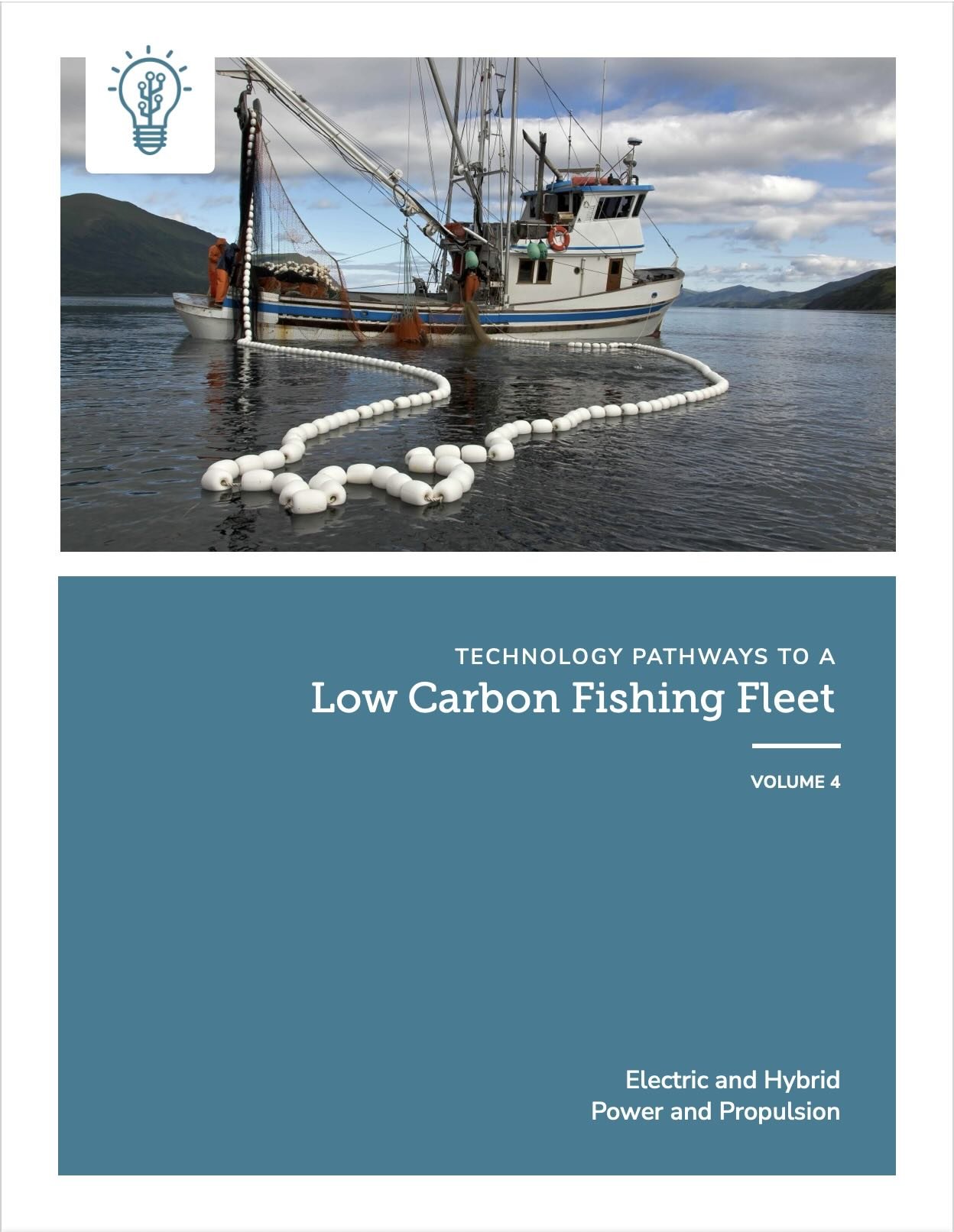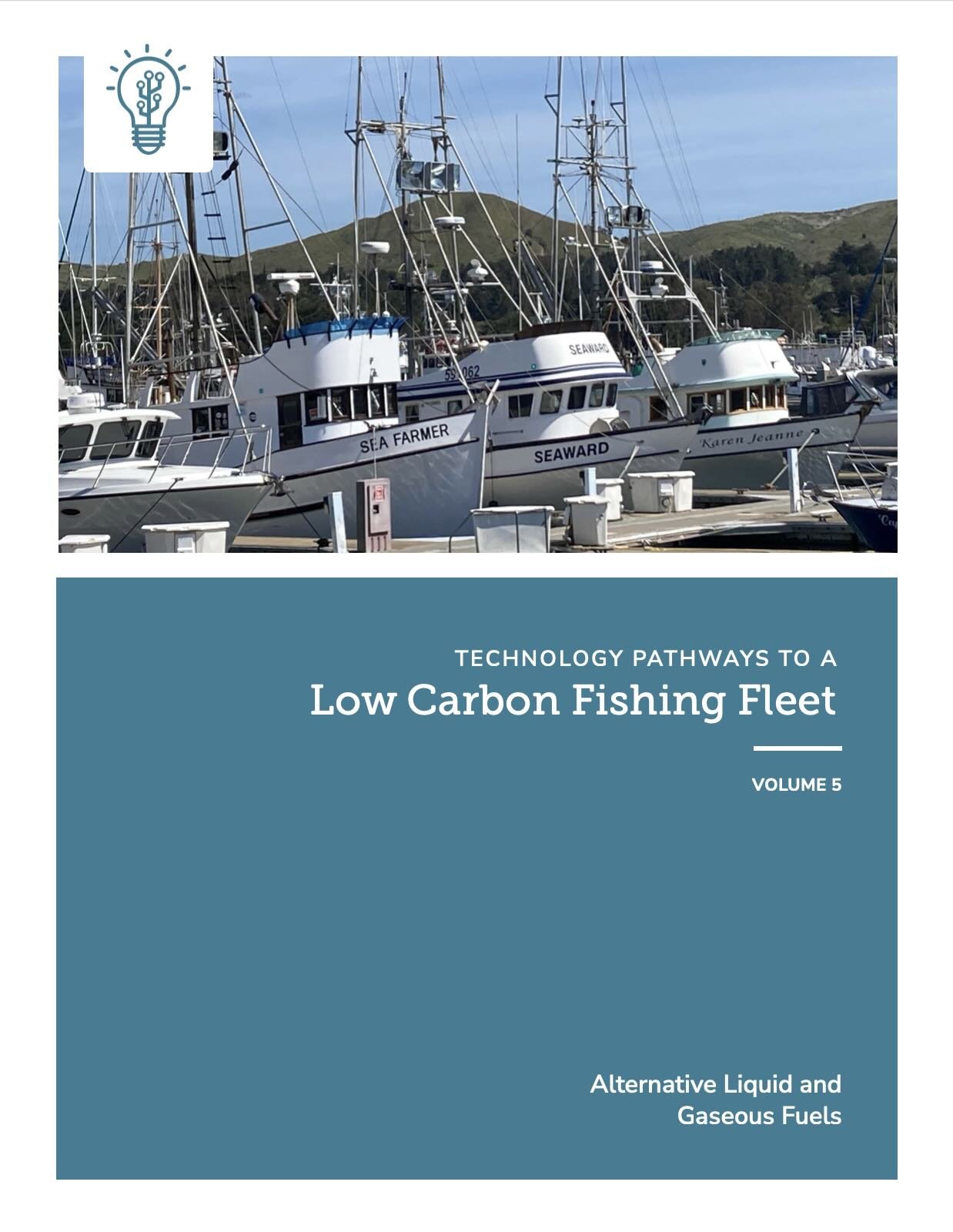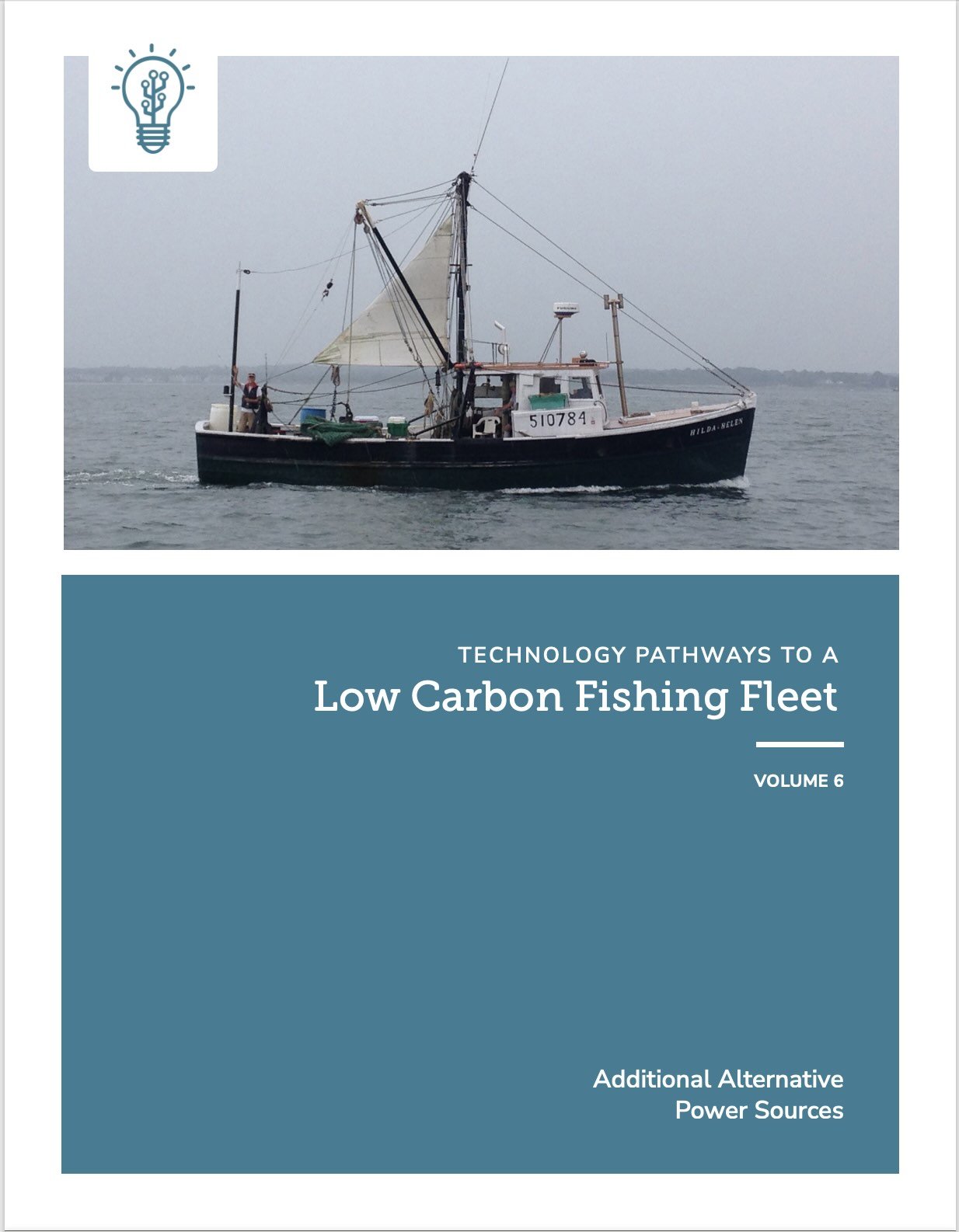
Volume 1: EPA Diesel Emissions Reduction Act (DERA) National Grants Program
In this volume: DERA is one of several existing public programs that offers an expandable or replicable model for supporting a transition to a low carbon fishing fleet. Commercial fishermen have had limited success tapping into the benefits of its national grants program. Through several case studies, we probe the reasons why, and learn how a few fishermen’s organizations have been able to buck this trend and repower vessels in their fleet with new, higher EPA tier engines by using this program.

Volume 2: EPA Diesel Emissions Reduction Act (DERA) Tribal Grants Program
In this volume: DERA is one of several existing public programs that offers an expandable or replicable model for supporting a transition to a low carbon fishing fleet. Pacific Northwest tribes have an impressive track record of leveraging this federal program to support fleet repowers for their fishermen. In this volume, we learn the secrets to their success as well as ways the program could potentially be improved.

Volume 3: EPA Diesel Emissions Reduction Act (DERA) State Grants Program
In this volume: DERA is one of several existing public programs that offers an expandable or replicable model for supporting a transition to a low carbon fishing fleet. States receive EPA funding to implement their own DERA programs; some choose to include fishing vessels while others do not. In this volume, we learn from fishermen in Maine, Connecticut, and Rhode Island who have utilized the program to repower their engines, illuminating both the programs’ highlights and areas for improvement.

Volume 4: USDA Rural Energy for America Program (REAP)
In this volume: REAP is one of several existing public programs that offers an expandable or replicable model for supporting a transition to a low carbon fishing fleet. Fishermen and their partners in Alaska have used a networked approach to unlock the benefits of this program, helping fishermen access technical assistance, energy audits, and investments in refrigeration, lighting, and more. Lessons from this success story can help fishermen in other rural areas achieve similar benefits.

Volume 5: California’s Carl Moyer and Related Programs
In this volume: Carl Moyer is one of several existing public programs that offers an expandable or replicable model for supporting a transition to a low carbon fishing fleet. California’s state policy has enabled its fleet to have some of the newest engines in the nation. In this volume, we share lessons from fishermen who have accessed or attempted to access this program, an engine installer who helps fishermen access this funding, and an air district administrator who plays a role in funding decisions.

Volume 6: Fishermen’s Recommendations for New Programs and Policies
In this volume: Sourced from fishermen coast to coast, this volume outlines an ambitious vision for a transition to a low carbon fishing fleet buttressed by holistic federal and state support and taking the form of a five-pronged strategy encompassing research and development, pilot and demonstration projects, knowledge transfer and workforce development, incentive programs to defray costs of adoption, and the creation of comprehensive energy transition plans for fishing ports.

Volume 1: Diesel Engine Efficiency and Emissions Reduction Innovations
In this volume: Advancements in diesel engine technology have been driven in recent decades by EPA regulations designed to improve local air quality, a goal that is distinct from reducing fuel consumption and greenhouse gas emissions. This volume describes diverging views among fishermen regarding the fuel efficiency and other pros and cons of newer, computer-controlled engines developed in response to EPA air quality regulations.

Volume 2: Tools and Strategies to Enhance Propulsion Efficiency
In this volume: Whether towing mobile fishing gear or transiting between port and fixed gear locations, propulsion is typically the largest power draw on a fishing vessel. This volume explores real-world experiences, motivations, and barriers to adopting energy-efficient innovations, including three innovations featured in the interview questionnaire (fuel flow meters, bulbous bows, and propeller nozzles) as well as numerous innovations introduced by interviewees themselves.

Volume 3: Tools and Strategies to Enhance Non-Propulsion Efficiency
In this volume: Non-propulsion energy loads include deck machinery, refrigeration, lighting, hotel uses, and navigation equipment. In this volume, we explore real-world experiences, motivations, and barriers to adopting energy-efficient innovations, including four innovations featured in the interview questionnaire (load-sensing hydraulic pumps, electric deck machinery, LED lighting, and improved fish hold insulation) as well as numerous innovations introduced by interviewees themselves.

Volume 4: Electric and Hybrid Power and Propulsion
In this volume: This volume explores the feasibility, benefits, and challenges of adopting pure battery-electric and hybrid-electric systems to diesel-electric setups, and synthesizes fishermen’s perspectives on each type of system. The report highlights a need for further innovation, targeted incentives, and improved infrastructure to facilitate adoption of electric propulsion in fishing fleets, while also underscoring the fact that electric propulsion will not be appropriate or desirable for all fleets and vessels.

Volume 5: Alternative Liquid and Gaseous Fuels
In this volume: This volume assesses prospects for using alternative liquid and gaseous fuels in commercial fishing vessels, including biomass-derived fuels (e.g., waste vegetable oil, biodiesel, renewable diesel, renewable natural gas) and power-to-fuel options (e.g., hydrogen, ammonia, methanol, and e-diesel), outlining potential benefits and limitations of each fuel type as articulated by potential end users in the fishing industry, providing insights for future innovation pathways and illuminating areas where enabling programs could be most useful.

Volume 6: Additional Alternative Power Sources
In this volume: This volume explores several innovative alternative propulsion and power generation technologies for possible use on commercial fishing vessels, including sail propulsion and electrical power generation from solar, wave, and nuclear energy. Wind-assisted propulsion through use of sails is currently used by a portion of the Pacific albacore fleet and is valued for extending range, saving fuel, and stabilizing vessels, while newer concepts like kite propulsion and rotor sails are also of interest to fishermen.

Volume 1: The Fishing Vessel Energy Baseline
In this volume: This volume describes the current landscape of energy consumption in fisheries, focusing on eight fleets: Alaska salmon seine, Bristol Bay gillnet, New England bottom trawl, New England gillnet, New England inshore lobster, New England scallop dredge, Southern California pot/hook/dive, and West Coast tuna/crab/salmon. Five fleets with a smaller presence in our project are also reviewed: Alaska longline/troll, Alaska salmon tenders, New England hook and line, New England midwater trawl, and Port Orford fisheries.

Volume 2: The Socio-Economic and Regulatory Context
In this volume: This volume explores socio-economic and regulatory factors that may retard or accelerate a transition to a low carbon fishing fleet. It draws attention to the economic challenges propelled by increasing costs, unpredictable revenues, regulatory uncertainty, and climate change impacts, which can hinder investments in technologies and vessel upgrades, and examines the role of fisheries management and safety regulations in constraining or enabling opportunities for innovation.

Volume 3: Waterfront Infrastructure
In this volume: This volume explores the critical role of shoreside infrastructure in enabling a transition to a low-carbon fishing fleet. Specific themes include the readiness of ports to handle next-generation fuels, the potential strain of increased electrical demand from vessel electrification, and the necessity of developing regional clean transportation corridors to support the mobility of fishing fleets.
